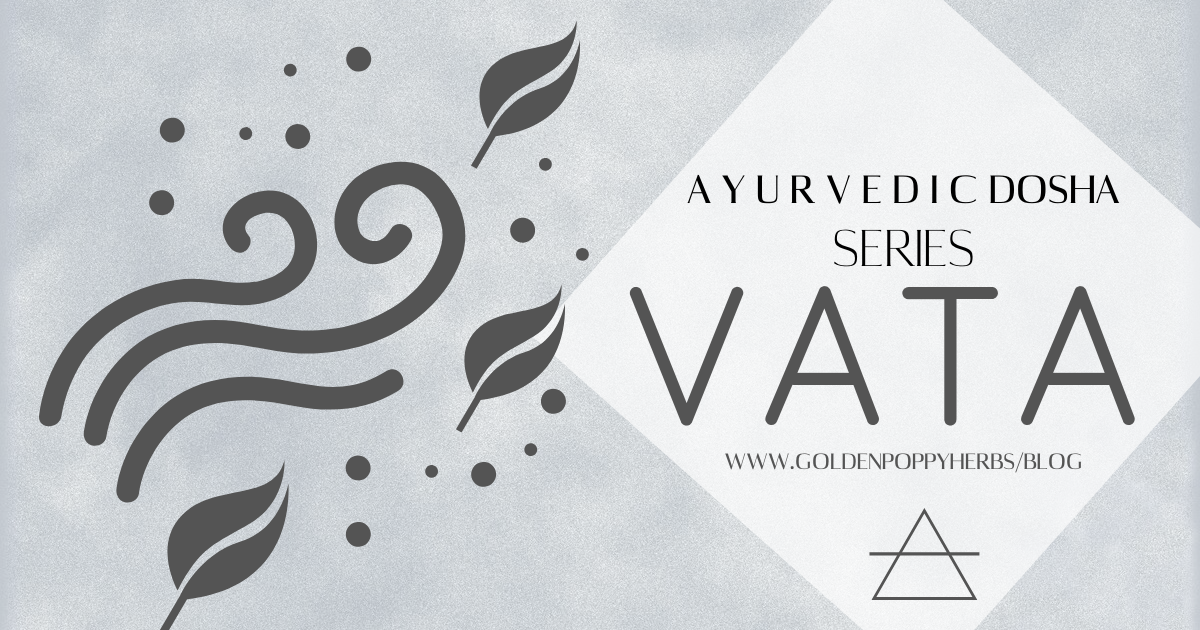 “Listen!
“Listen!
The wind is rising, and the air is wild with leaves,
We have had our summer evenings, now for October Eves!”
- Humbert Wolfe
Wow. October is already here! We are gracefully entering the peak of autumn now. You may find yourself feeling a bit of a calmer energy, or perhaps you are craving cozying up with a good book and some quiet time. This may very well be because you are tapping into the rhythms of this time of year! If you read our September blog, we discussed ways to connect with and celebrate the Autumnal Equinox (A.K.A., the “official” start of fall). As the sun sets on long, bright, summer days, we are moving into a time of long, cool, end-of-harvest evenings. It is this time of year that calls us to not only shed what no longer serves us, as the trees do, in order to prepare for what is to come, but also asks us to slow down, reflect inwards, and seek balance.
 Photo by Conger Design[/caption] That is what makes this the perfect time of year to introduce a new 3-part mini-series on our blog, as the very topic of this series focuses on finding wellness by being better in tune with what is within us. We warmly invite you to join us as we explore the Ayurvedic Doshas, and how understanding your Dosha may be an effective holistic method when pursuing balance in your personal health.
Photo by Conger Design[/caption] That is what makes this the perfect time of year to introduce a new 3-part mini-series on our blog, as the very topic of this series focuses on finding wellness by being better in tune with what is within us. We warmly invite you to join us as we explore the Ayurvedic Doshas, and how understanding your Dosha may be an effective holistic method when pursuing balance in your personal health.
What is Ayurveda?
Ayurveda is a holistic wellness and ancient alternative medicinal practice dating back over 5,000 years. The word Ayurveda is derived from the Sanskrit language and arises from deep roots in India. Practitioners of Yoga may already be familiar with Ayurveda, as the yogic asanas have an intimate connection to the health and lifestyle activities integral to this holistic method of healing.“Ayur” meaning “life” or “longevity” + “Veda” meaning “science” or “sacred knowledge” = Ayurveda
Ayurveda, roughly translates to “the science of longevity,” or “the sacred knowledge of life.”
Ayurveda, like many forms of alternative and holistic wellness practices, considers us a product of our environment - as in, we are literally comprised of the elements (Air, Water, Fire, Earth, and Ether) themselves. By understanding the relationships we have with elements, both internally and externally, as well as incorporating a more intimate understanding of the elements in our day-to-day lifestyle, we can better achieve balance in our overall wellness.
The element, or energy, (or perhaps, mixture of elements or energies) that most closely aligns with your bodily composition is known as your Dosha; of which there are three. While all three exist within us at all times, one may be more predominant than the other two, and it is this predominant element or energy which determines what is called your constitution. The Doshas are what we will discuss in more detail in this mini-series! However, we thought it might be helpful to do a bit of an “Ayurveda 101” to get started and to better understand how this practice work - and why the Doshas are fundamental.Ayurveda 101
Ayurveda is holistic in nature. Not only are the methods for achieving wellness natural, but are built upon the concept that mind, body, and consciousness are interwoven systems - not separate - and must work in harmony. Additionally, our relationship with our external environment, particularly stress inhibitors and determining strategies to minimize them, is also essential on our path to wellness. The practice of Ayurveda is about seeking balance. As mentioned by Dr. Vasant Lad, Ayurvedic Physician and founder of The Ayurvedic Institute in Albuquerque, New Mexico, “Balance is the natural order; imbalance is disorder. Health is order; disease is disorder. Within the body there is a constant interaction between order and disorder. When one understands the nature and structure of disorder, one can re-establish order.” Essentially, Ayurveda uses a preventative approach. Through the practice of understanding our bodily constitution, how best to nourish our bodies in such a way that best aligns with the elemental correspondences relative to our bodily constitution, and how to minimize stress that may be activated by outside influences of our environment, we can better establish the order and harmony needed to thrive. By being in tune with what our bodies require for balance, we prevent disease before it can occur. So what exactly are the Doshas and why are they important? It probably cannot be put more clearly, than as described by Dr. Vasant Lad himself:“Ayurveda identifies three basic types of energy or functional properties that are present in everyone and everything. Since there are no single words in English that convey these concepts, we use the original Sanskrit words vata, pitta, and kapha. These principles can be related to the basic biology of the body.
Energy is required to create movement so that fluids and nutrients get to the cells, enabling the body to function. Energy is also required to metabolize the nutrients in the cells, and is called for to lubricate and maintain the structure of the cell.
Vata is the energy of movement,
Pitta is the energy of digestion or metabolism,
Kapha [is] the energy of lubrication and structure.
All people have the qualities of vata, pitta, and kapha, but one is usually primary, one is secondary, and the third is usually the least prominent. The cause of disease in Ayurveda is viewed as lack of cellular function due to an excess or deficiency of vata, pitta, or kapha.”
The energies mentioned above, vata, pitta, and kapha, are what we have come to know as the Doshas. To to put it simply, if the balances of the Doshas become out of whack, this is when we experience unwellness, or disease. This is why knowing your individual constitution is key, as it can better allow you to determine how best to bring balance. We look forward to exploring the concept of Ayurveda with you all further as we continue in this series, and taking a deeper dive into this method of alternative wellness.The Vata Dosha - An Overview
The first Dosha we will discuss is the Vata Dosha! The Vata Dosha corresponds with the elements of Air and Ether (otherwise known as Space). Qualities often associated with the Vata Dosha include: Dry, Light, Cold, Rough, Mobile, Subtle, and Clear.
 Photo by Coco Parisienne[/caption] An individual with a Vata Dosha constitution aligns quite a lot with the elements of air and ether. They tend to have characteristics and personality traits including:
Photo by Coco Parisienne[/caption] An individual with a Vata Dosha constitution aligns quite a lot with the elements of air and ether. They tend to have characteristics and personality traits including:
- Being sensitive
- Someone who is spiritual
- Someone who has difficulty remaining grounded - consistently running late, tends to be fidgety or finds it difficult to sit still, tends to miss meals as they forget to eat, struggles with or tends to be overwhelmed with daily routine, and often expresses flightiness
Ayurveda and Herbalism
So at this point, you may be wondering - why would an herbal apothecary want to explore Ayurveda with you all? Glad you asked! Ayurveda actually has a very intimate connection with the practice of herbal healing. Being gentle to our bodies and using natural solutions are fundamental aspects of an herbalism practice, and Ayurveda very much aligns with this concept. Herbs are used in Ayurveda not simply as a means in which to remedy a symptom or particular illness, but as a means in which to bring balance to the body as a whole; bringing harmony to mind and spirit as well. To bring balance to a Vata constitution, we need to counteract the air and space of this Dosha. This means that a Vata will benefit greatly from things that encourage groundedness and are warming. Some examples of herbs that have these qualities include:- Ashwagandha - for it's warming and moistening energetic properties as well as its ability to alleviate stress
- Oats - a premier nerve tonic, oats in food, oat straw tea, or milky oat tincture are moistening to the system and help Vatas feel more grounded and centered. (Read more about Oats Here and Here)
- Warming Spices - These include such spices as ginger, cardamom, cinnamon, or black pepper are excellent for warming up the body and the digestion. (Chai tea is a particularly perfect way to enjoy all of these flavors)
All of these herbs are also helpful for anyone experiencing Vata aggravation that is often brought on by this time of year, particularly when the wind picks up. But you can use them anytime you are feeling ungrounded, restless, and overly stimulated. We sell these herbs in bulk, which can be purchased online, or we would love to meet you! We would be honored to assist you if you would rather come into our store in person!
 Photo by Annie Spratt[/caption]
Photo by Annie Spratt[/caption]
A Few Tips for Our Vatas Out There
If you suspect you may be a Vata (thought taking a quiz may help you to be sure), here are a few quick tips to jumpstart your journey to achieving balance:Get Grounded.
While routine may be difficult, it is truly the best for someone who is a Vata. Having discipline in your schedule can help alleviate issues such as chances of being late, which can increase our stress levels. Try to wake and sleep at the same time each day. It is also important that Vatas make time to be grounded. Developing a consistent meditation practice is encouraged.Incorporate Warming Foods.
Having a composition that is airy can leave Vatas experiencing coolness more often than not. Incorporating warming foods such as cozy, creamy soups, heavier foods like sweet potatoes or other root vegetables, and heavier grains can help!Release Energy.
Consistent exercise is excellent for Vatas. Recommended types of exercise include those that allow for a fair level of exertion, but not necessarily significantly high intensity such as weightlifting or yoga. This helps air move more fluidly throughout one’s body.Get Cozy.
It is important for Vatas to make their environment quiet and comfortable each day. When a Vata is prone to flightiness or overwhelm, this will allow one to time and space to reflect inward and bring a sense of calm to chaos. Additionally, this will allow a Vata to truly tap into their creative flow. Use this time to nurture and encourage creative energy, and channel energy into creating.Nourish your Body
Vatas are particularly susceptible to dry skin, which is why our Vata Body Oil is the perfect remedy to nourish yourself on a daily basis. We are excited to continue exploring the Ayurveda and the Doshas with you. Be on the lookout for future posts from this series where we dive into the Pitta and Kapha Doshas. In the meantime, we hope your autumn brings you space to make time for YOU (you deserve it!) and see you next month! Sources:- Banyan Botanicals. “Introduction to Ayurveda: Embody Your True Potential.” Living Ayurveda. 2019. https://www.banyanbotanicals.com/info/ayurvedic-living/learning-ayurveda/intro-to-ayurveda/
- Chopra Center, The. “Calming Herbs to Balance your Vata Dosha.” The Chopra Center. https://chopra.com/articles/calming-herbs-to-balance-your-vata-dosha
- Potter, Emily. “Ayurveda Body Types.” NourishMint Wellness Clinical and Holistic Nutrition. 2013. http://www.nourishmintwellness.com
- Stillman, Cate. “How to be a Vata.” Thrive Guide by Cate Stillman. 2019. https://yogahealer.com/wp-content/uploads/2016/08/how-to-be-a-vata.pdf
- Vasant Lad, M.A.S.c. “Ayurveda: A Brief Introduction and Guide.” The Ayurvedic Institute. 2016. https://www.ayurveda.com/pdf/intro_ayurveda.pdf



